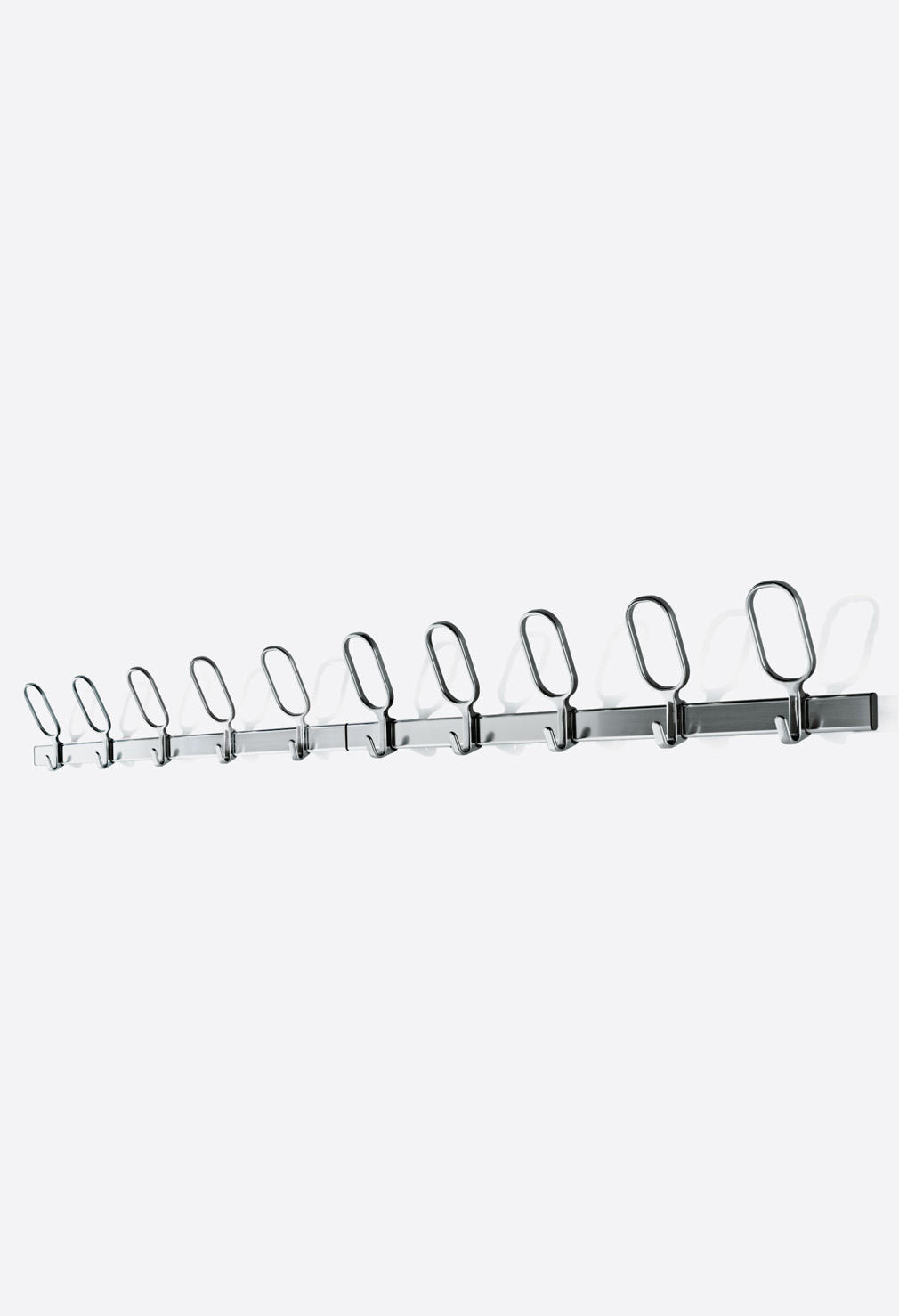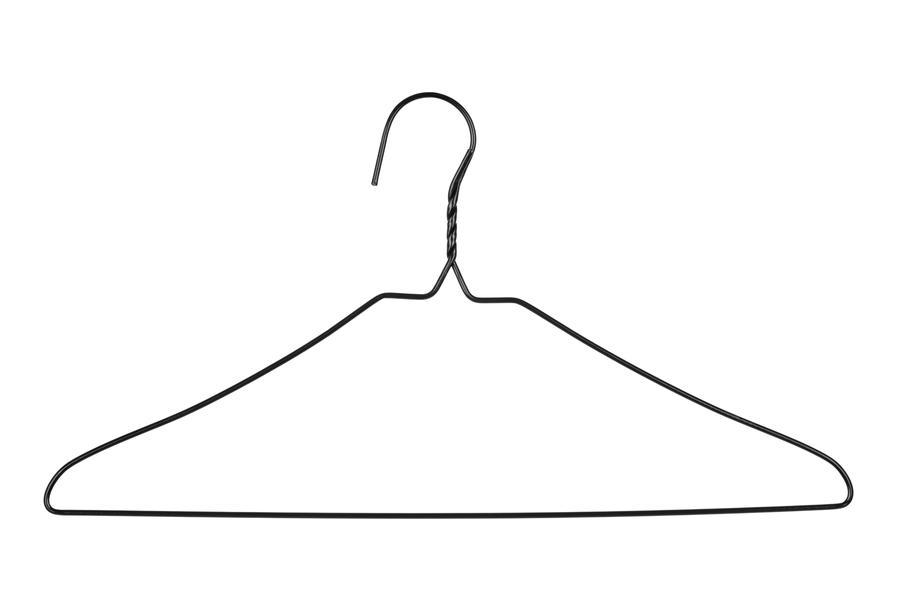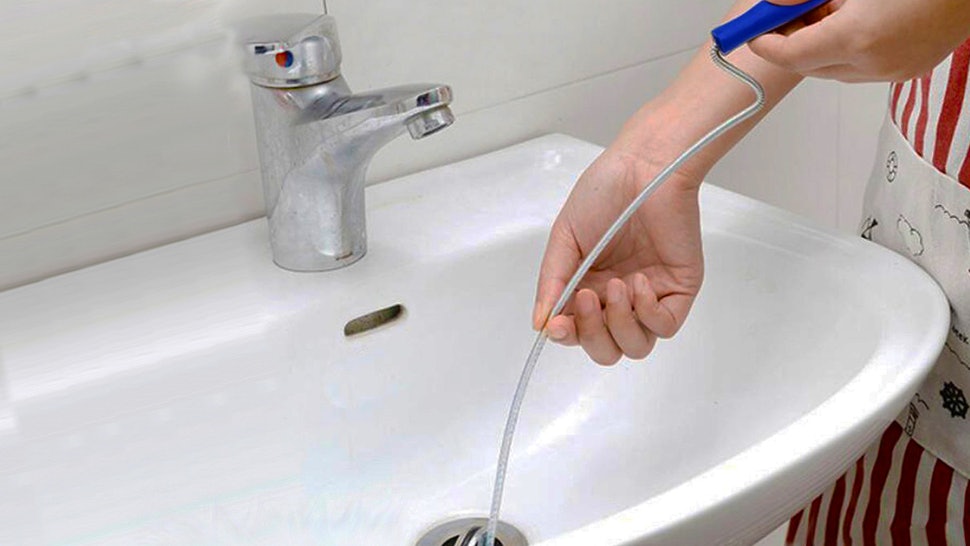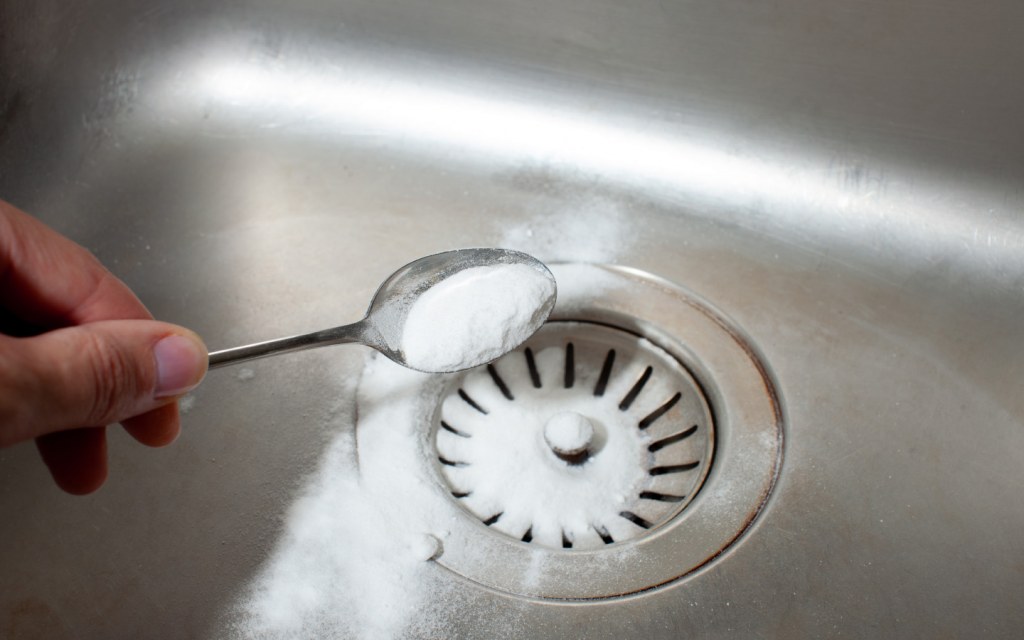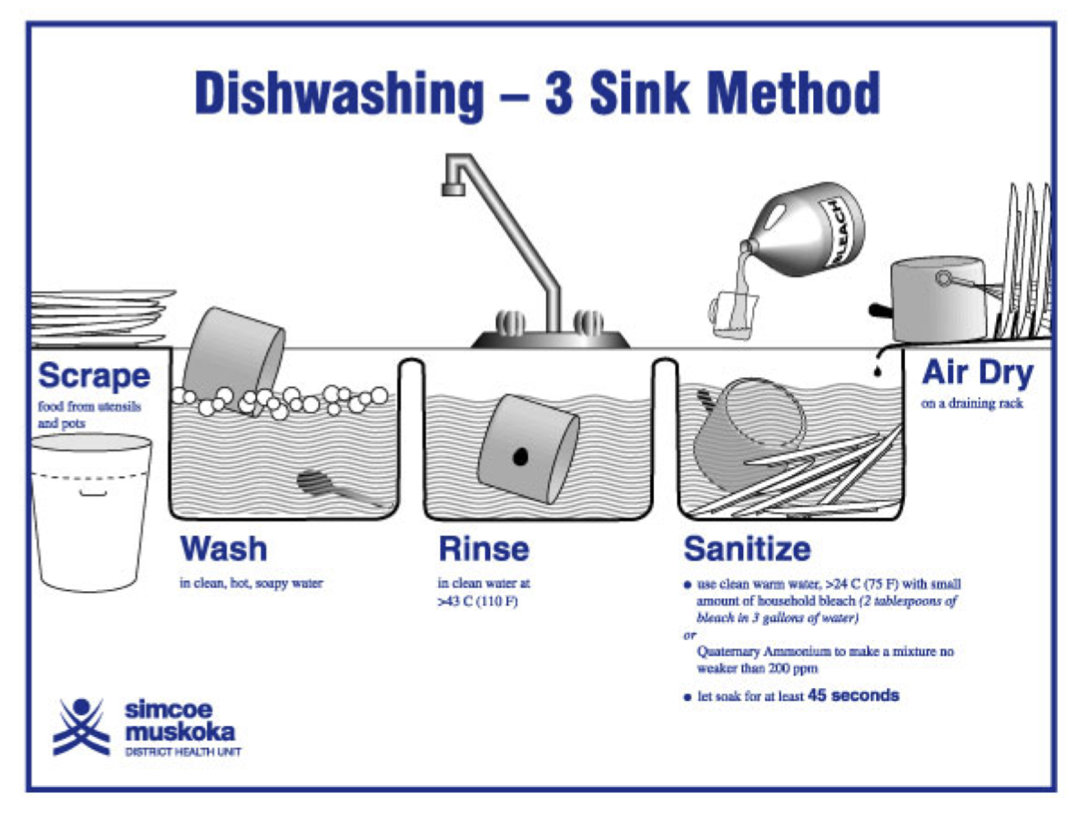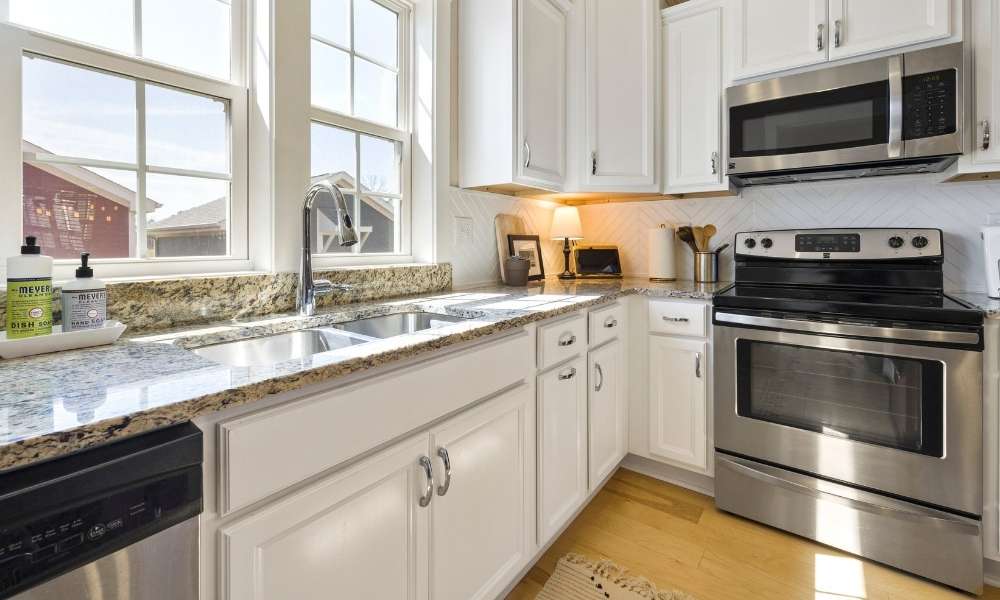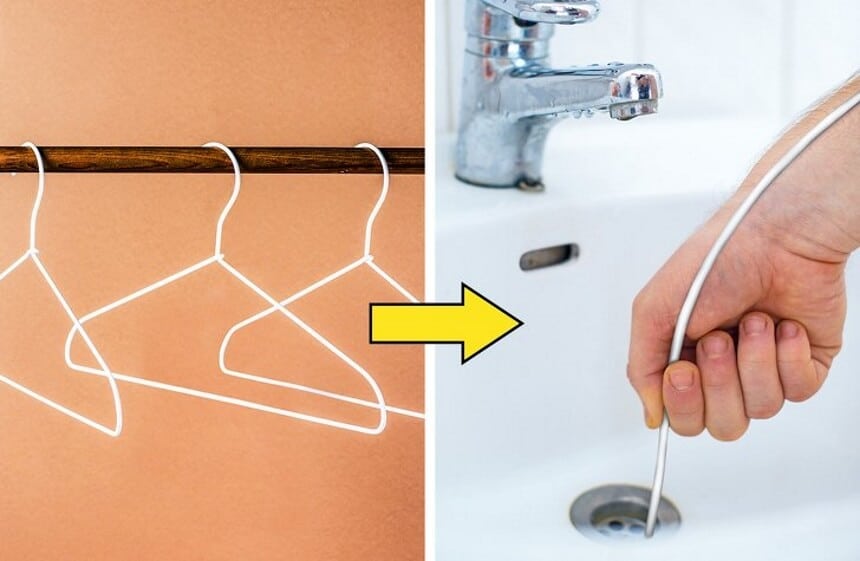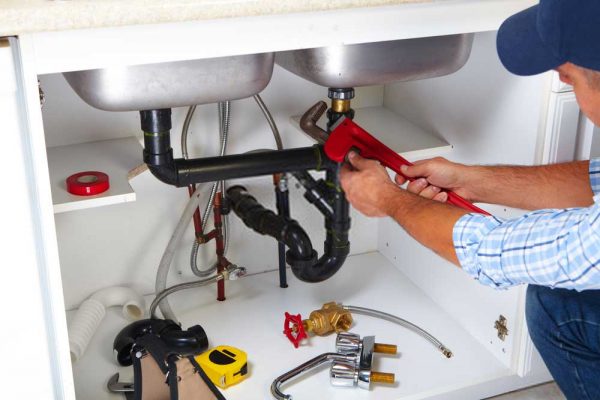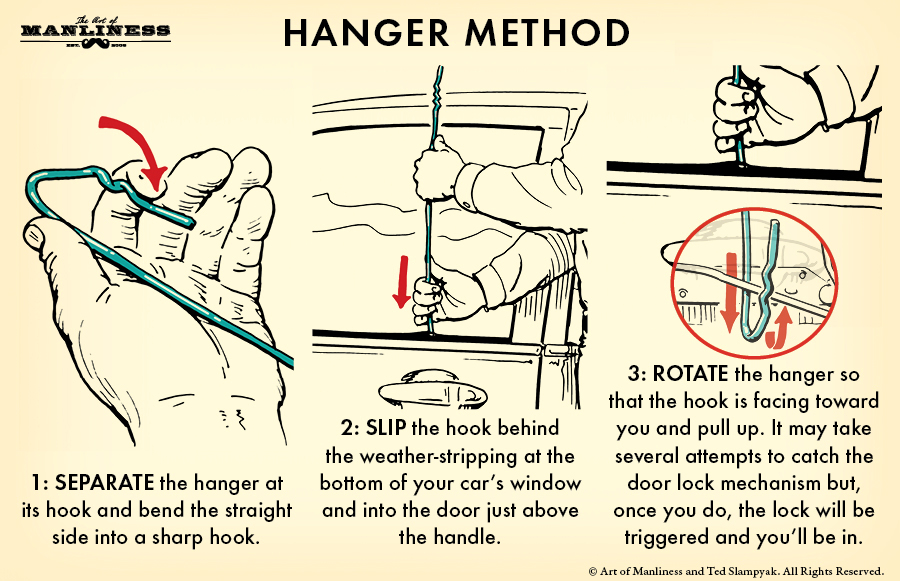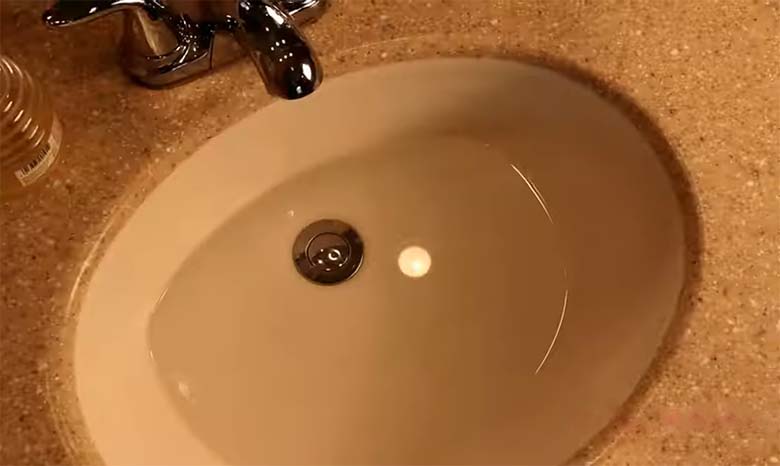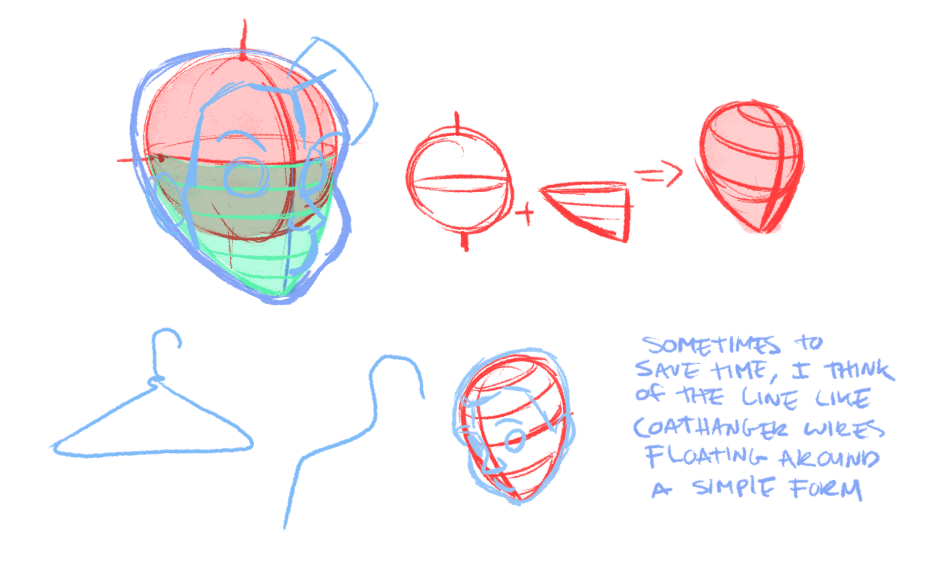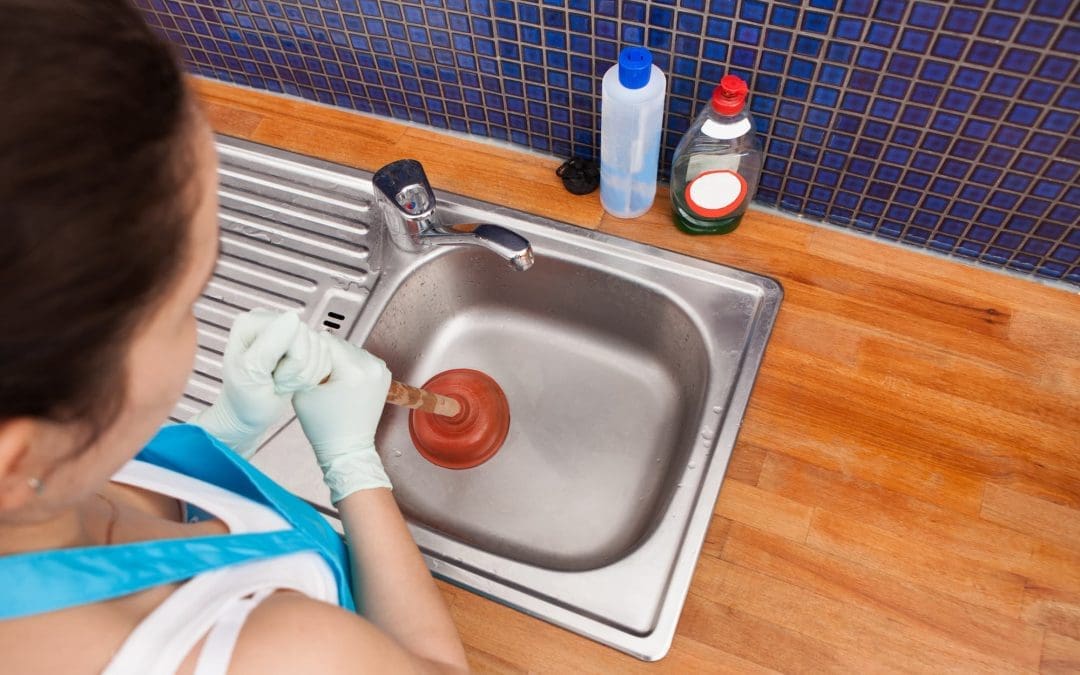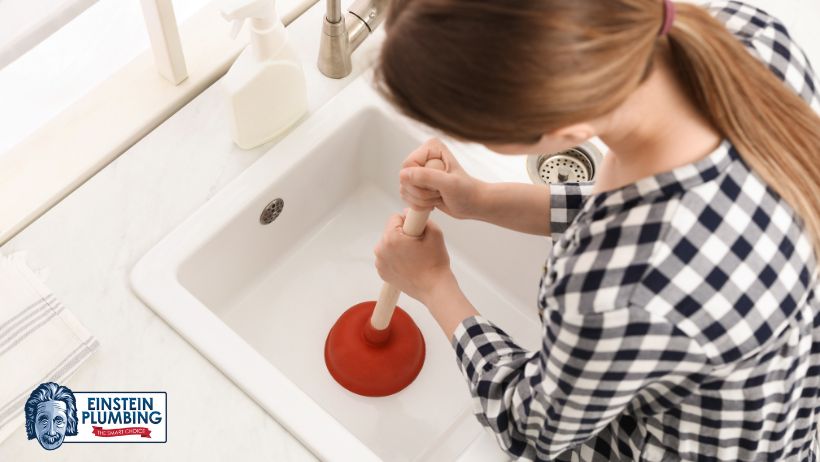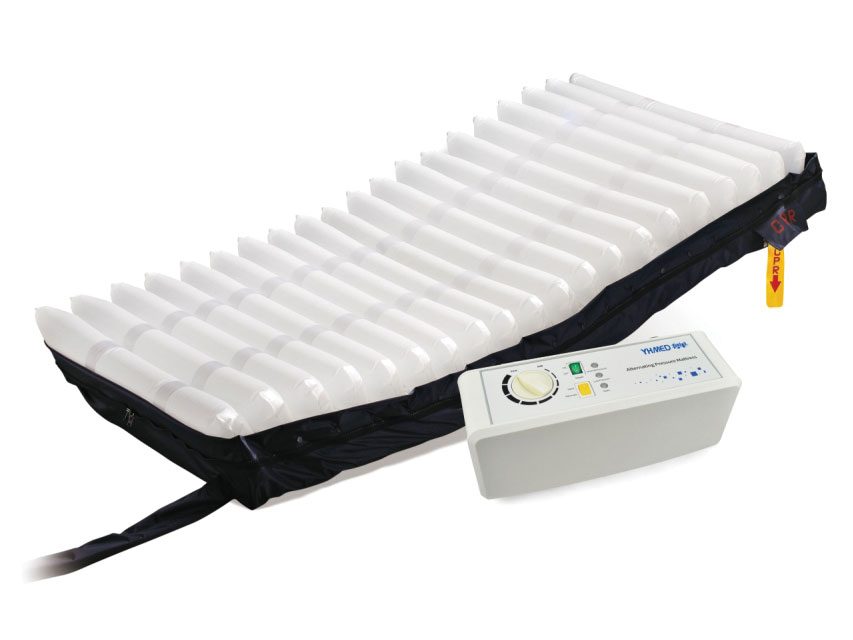If you're dealing with a clogged kitchen sink, you may be tempted to reach for harsh chemicals or call a plumber. But before you spend money on expensive solutions or wait for a professional to arrive, try using a simple wire coat hanger to clear the blockage. This DIY method is easy and effective, and chances are you already have a coat hanger lying around in your closet. So, let's get started and unclog that kitchen sink!1. Use a wire coat hanger to remove clogs in your kitchen sink
To start, straighten out a wire coat hanger and bend one end to create a hook. This will be used to catch and pull out any debris causing the clog. Next, remove the sink stopper or drain cover to gain access to the drain. If you have a double sink, make sure to plug the other side with a cloth or drain stopper to prevent any debris from going down and causing further blockage. Once you have access to the drain, use the hook end of the coat hanger to reach down and pull out any visible debris. Be gentle and avoid pushing the blockage further down. You may need to twist or wiggle the hanger to dislodge the clog. Once you have removed as much debris as possible, run hot water down the drain to help flush out any remaining buildup.2. Unclog your kitchen sink with a coat hanger and some hot water
If the wire coat hanger method doesn't fully clear the clog, you can try a more DIY approach. Mix equal parts baking soda and vinegar and pour it down the drain. Let it sit for a few minutes and then pour hot water down the drain. The chemical reaction between the baking soda and vinegar can help break down and loosen the clog. You can then use the coat hanger to remove any remaining debris. Another DIY option is using a plunger. Fill the sink with enough water to cover the plunger and place it over the drain. Push and pull the plunger vigorously to create suction and hopefully dislodge the clog. Be sure to cover the overflow hole with a wet cloth to prevent air from escaping and reducing the effectiveness of the plunging.3. DIY method for unclogging a kitchen sink using a coat hanger
If you have a garbage disposal, make sure to turn it off and unplug it before attempting any unclogging methods. You can also use the wire coat hanger to reach down and manually turn the blades of the disposal to dislodge any debris. Once you have removed any visible blockage, run hot water and turn the disposal back on to help flush out any remaining buildup. For stubborn clogs that won't budge, you can try using a plumbing snake to break up and remove the blockage. Insert the snake into the drain and rotate it while pushing it down. Once you feel resistance, wiggle and rotate the snake to break up the clog. Pull it out and run hot water down the drain to ensure it's fully cleared.4. How to easily unclog a kitchen sink with a coat hanger
To summarize, here's a step-by-step guide for using a coat hanger to unclog your kitchen sink: Step 1: Straighten out a wire coat hanger and bend one end to create a hook. Step 2: Remove the sink stopper or drain cover and plug the other side if you have a double sink. Step 3: Use the hook end of the coat hanger to reach down and pull out any visible debris. Step 4: Run hot water down the drain to flush out any remaining buildup. Step 5: If the clog is not fully cleared, try using a DIY method like baking soda and vinegar or a plunger. Step 6: For stubborn clogs, use a plumbing snake to break up and remove the blockage. Step 7: Run hot water down the drain to ensure it's fully cleared.5. Step-by-step guide for using a coat hanger to unclog a kitchen sink
While using a wire coat hanger to unclog your kitchen sink is a simple and effective method, there are some tips and tricks that can make the process even easier: Tip 1: Always start by removing any visible debris with the hook end of the hanger. Tip 2: Use hot water to help loosen and flush out any remaining buildup. Tip 3: Avoid using harsh chemicals as they can damage your pipes and be harmful to the environment. Tip 4: If the clog persists, try a different DIY method or call a professional plumber. Tip 5: Regularly maintain your kitchen sink by pouring hot water down the drain to prevent buildup and clogs.6. Unclogging a kitchen sink with a coat hanger: Tips and tricks
Using a wire coat hanger to unclog your kitchen sink is not only easy and effective, but it's also a budget-friendly solution. You can save time and money by avoiding expensive chemicals or a plumber's visit. Plus, it's a quick fix that can be done in minutes, so you can get back to using your kitchen sink without any hassle.7. The coat hanger method: A simple solution for a clogged kitchen sink
Using a wire coat hanger to unclog your kitchen sink is not only environmentally friendly, but it's also a safer option for your pipes. Harsh chemicals can corrode and damage your pipes, leading to more costly repairs in the future. With a coat hanger, you have full control over what goes down your drain and can avoid any potential damage.8. Unclog your kitchen sink without harsh chemicals using a coat hanger
The wire coat hanger method is a quick and easy way to unclog your kitchen sink, making it a convenient solution for any busy household. You don't have to wait for a plumber or worry about using harsh chemicals. With a few simple steps, you can have your kitchen sink back up and running in no time.9. Quick and easy way to unclog a kitchen sink with a wire coat hanger
While using a wire coat hanger to unclog your kitchen sink is a straightforward process, there are some common mistakes that can hinder the effectiveness of this method: Mistake 1: Pushing the blockage further down instead of pulling it out. Mistake 2: Using too much force and potentially damaging your pipes. Mistake 3: Not plugging the other side of a double sink, causing the blockage to move back and forth between both drains. Mistake 4: Not using hot water to help flush out any remaining buildup. By avoiding these mistakes and following the steps outlined in this article, you can easily and effectively unclog your kitchen sink using a simple wire coat hanger.10. Unclogging a kitchen sink with a coat hanger: Common mistakes to avoid
How to Unclog Your Kitchen Sink with a Coat Hanger

A Simple and Effective Solution for a Common Household Problem
 If you've ever had to deal with a clogged kitchen sink, then you know how frustrating and inconvenient it can be. Not only does it disrupt your daily routine, but it can also lead to unpleasant odors and potential damage to your plumbing. Before reaching for harsh chemicals or calling a plumber, try this simple and budget-friendly solution – unclogging your kitchen sink with a coat hanger.
If you've ever had to deal with a clogged kitchen sink, then you know how frustrating and inconvenient it can be. Not only does it disrupt your daily routine, but it can also lead to unpleasant odors and potential damage to your plumbing. Before reaching for harsh chemicals or calling a plumber, try this simple and budget-friendly solution – unclogging your kitchen sink with a coat hanger.
The Benefits of Using a Coat Hanger
 Using a coat hanger to unclog your kitchen sink has numerous benefits. First and foremost, it's a cost-effective solution. Instead of spending money on expensive chemical drain cleaners or calling a plumber, you can simply use a coat hanger that you already have at home. Additionally, it's a quick and easy fix that doesn't require any special tools or skills. With a little bit of patience and determination, you can have your kitchen sink back to its normal functioning in no time.
Using a coat hanger to unclog your kitchen sink has numerous benefits. First and foremost, it's a cost-effective solution. Instead of spending money on expensive chemical drain cleaners or calling a plumber, you can simply use a coat hanger that you already have at home. Additionally, it's a quick and easy fix that doesn't require any special tools or skills. With a little bit of patience and determination, you can have your kitchen sink back to its normal functioning in no time.
Step-by-Step Guide
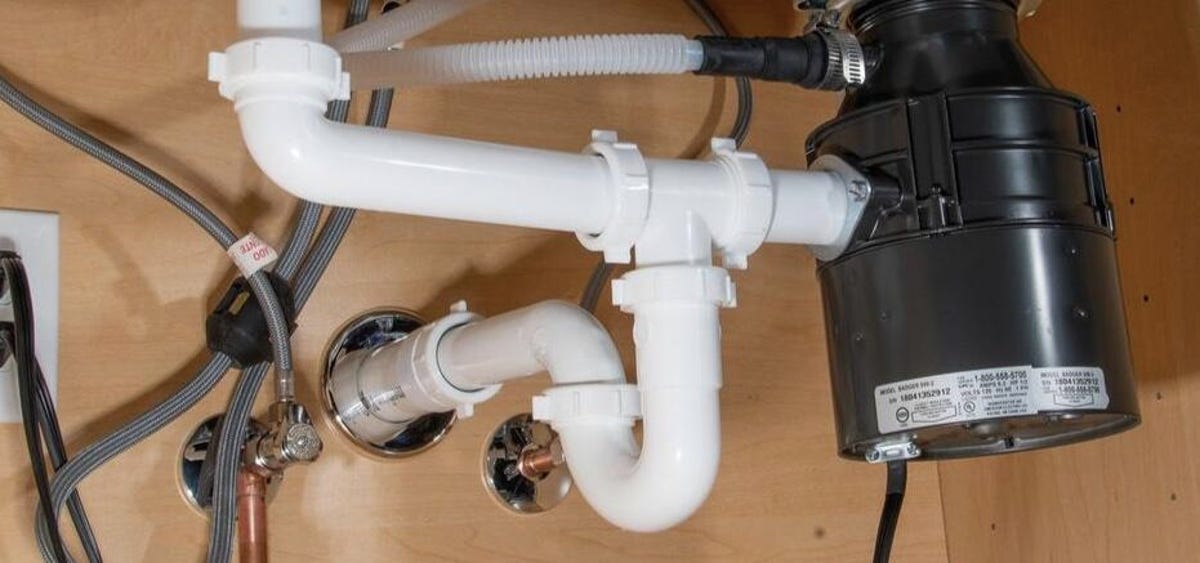 Step 1:
Straighten out a wire coat hanger, making sure to keep the hooked end intact.
Step 2:
Use pliers to bend the hook into a small loop to avoid damaging your pipes.
Step 3:
Insert the hooked end of the coat hanger into the drain, pushing it in as far as it will go.
Step 4:
Slowly twist and turn the coat hanger, pulling it back and forth to break up any clogs.
Step 5:
Once you feel the clog start to loosen, pull the coat hanger out and discard any debris that may have come out with it.
Step 6:
Run hot water down the drain to flush out any remaining debris.
Step 1:
Straighten out a wire coat hanger, making sure to keep the hooked end intact.
Step 2:
Use pliers to bend the hook into a small loop to avoid damaging your pipes.
Step 3:
Insert the hooked end of the coat hanger into the drain, pushing it in as far as it will go.
Step 4:
Slowly twist and turn the coat hanger, pulling it back and forth to break up any clogs.
Step 5:
Once you feel the clog start to loosen, pull the coat hanger out and discard any debris that may have come out with it.
Step 6:
Run hot water down the drain to flush out any remaining debris.
Preventing Future Clogs
 To prevent future clogs, it's important to be mindful of what you put down your kitchen sink. Avoid pouring grease, coffee grounds, and food scraps down the drain. Install a drain strainer to catch any large particles before they can cause a clog. You can also pour boiling water down the drain once a week to help break down any buildup.
To prevent future clogs, it's important to be mindful of what you put down your kitchen sink. Avoid pouring grease, coffee grounds, and food scraps down the drain. Install a drain strainer to catch any large particles before they can cause a clog. You can also pour boiling water down the drain once a week to help break down any buildup.
Conclusion
 Unclogging your kitchen sink with a coat hanger is a simple and effective solution that can save you time and money. Just remember to be gentle and patient while using the coat hanger to avoid damaging your pipes. With a little bit of maintenance, you can keep your kitchen sink running smoothly and avoid future clogs.
Unclogging your kitchen sink with a coat hanger is a simple and effective solution that can save you time and money. Just remember to be gentle and patient while using the coat hanger to avoid damaging your pipes. With a little bit of maintenance, you can keep your kitchen sink running smoothly and avoid future clogs.


